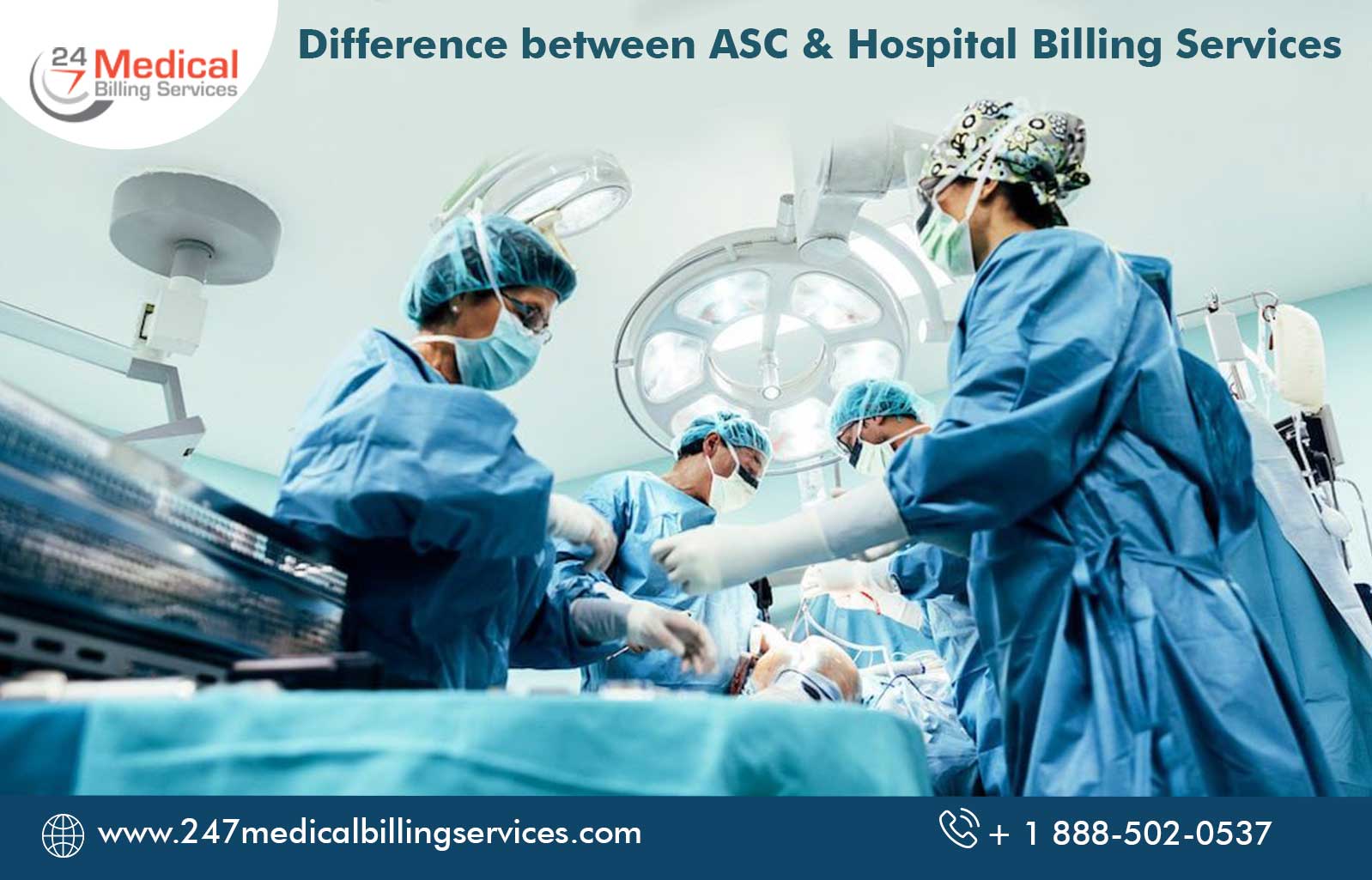
Difference Between ASC & Hospital Billing Services
Hospital Billing Services include billing of services offered by hospital-based departments and an Ambulatory Surgery Center (ASC) billing includes that of stand-alone facilities. An ASC can come under Hospital Billing Services if they are within a 35-mile radius from a hospital and share the same financial/administrative contracts. Similarly, a hospital can also maintain an ASC status if it has its own Medicare agreement and is entirely financially and administratively independent.
A Better Understanding of an ASC
An ASC is an individual facility that focuses on providing surgical procedures for outpatients. Whereas hospitals provide services for outpatient, inpatient, or emergency procedures. This may include pain management, surgical care, etc. which are extensive but won’t require a night stay in the hospital.
ASCs need to have an agreement with CMS which shows that they will abide by the rules and regulations of CMS and provide the specific services to patients. An ASC also needs to be certified through a state-specific agency. All these factors that the ASC gets their highest rate of reimbursement and that the patients get the correct treatment from a certified service center.
An ASC is like a facility with all medical specialties rolled into one, but a patient can’t go there for a sick visit. They can provide a diagnosis to patients who already have a diagnosis from a primary care physician. A facility gets a variety of outpatient procedures each day.
Though they both have lots of similarities, they also feature differences in their work as well as their billing.
Difference in Coding
Hospital billing includes charging for work cases by hospitals, specialty nursing offices, other organizations, laboratory services, radiology services, for both inpatient and outpatient procedures. Hospital billing services include both – charging and collections hence the coding is significantly difficult than that used for ASC.
ASC billing does not relate to a specific medical specialty, as there are no typical procedures or services. Hence, they do not need those highly specialized guidelines made for medical specialty billing for getting reimbursement for their services. For ASC services to be paid, it is mandatory for the service to be medically necessary. Nonetheless, ASC billing does need to follow the Centers for Medicare & Medicaid Services (CMS) guidelines. Medicare mandates that the modifier SG should be used to indicate that the services were offered by an ASC.
Both the above options need specialized coders and billers for the smooth sailing of reimbursements and profits.
Difference in Costs
It is believed that payments are lower in ASCs than in hospitals. As per recent data from Medicare’s Procedure Price Lookup tool, the cost for knee arthroscopy in an ASC was $1,005, compared to $2,099 in hospitals. But these may differ from state to state. Hospital billing rates have been updated based on the hospital market, which has a fixed weight index of costs or services. On the other hand, ASC payments were updated as per the Consumer Price Index for All Urban Consumers, which increases slowly than the medical care costs.
Difference in Forms
While hospitals use the UB-04 (also known as CMS 1450) claim form, ASCs use the billing hospital codes through a CMS-1500 form. The UB-04 form includes many more complicated questions than the CMS-1500 form. Both the forms have common fields like demographics, procedures with charges applicable, and the identification information about insurance plans and providers.
In the UB-04 form, a patient needs to fill out the medical record number and fill in the boxes for occurrence dates and condition codes. This form provides a large section wherein all the necessary HCPCS codes can be filled in. One can also mention the number of pages of codes included in the claim. In another section, one can mention up to 18 diagnosis codes that indicate the existing health issues and critical while the patient is in surgery or emergency. The digital version of UB-04 is known as the 837-I, where I stands for the institutional configuration.
Sometimes, hospitals might not charge for patient procedures, but the doctors might. In this case, CMS 1500 claim form is used while billing the individual services to the patient. CMS-1500 is the red-ink on white paper case form used for charging as per the case, by doctors or suppliers. The electronic version of the form is known as the 837-P where P stands for professional configuration.
As you see, both these billing methods need lots of attention. With several outsourced medical billing services being available today, it definitely is a task to find the right one for your business. We, 24/7 Medical Billing Services, are an independent medical billing service provider for all your different billing needs.
Read more: A Guide On Ambulatory Surgical Center (ASC) Billing Services

.png)